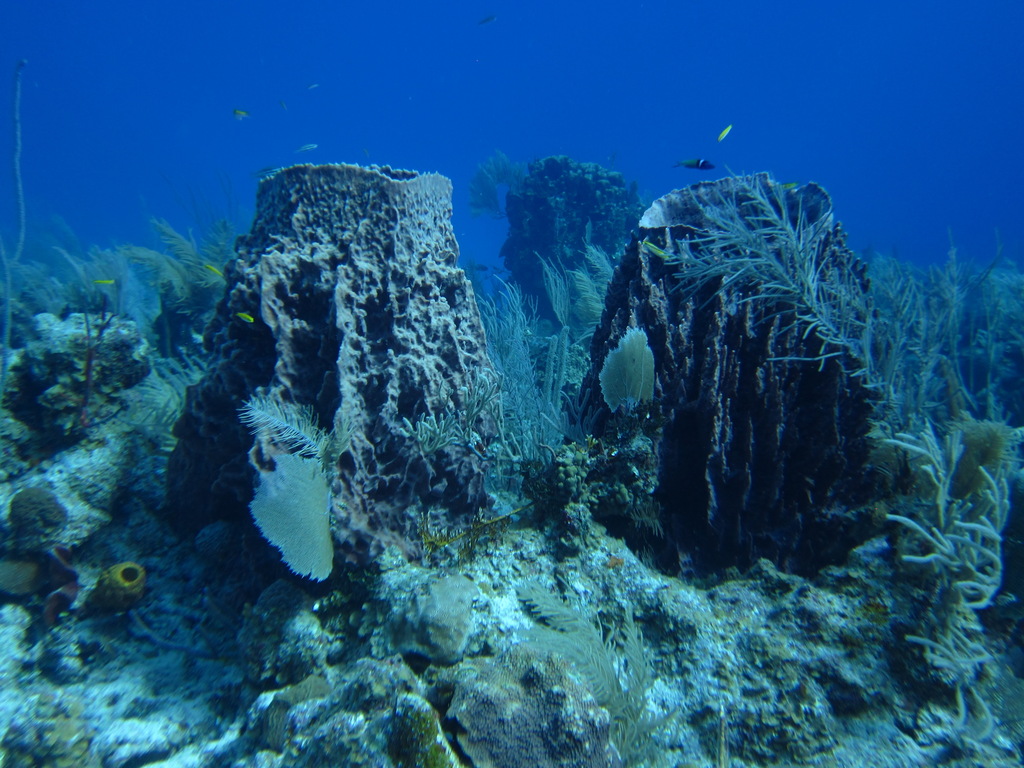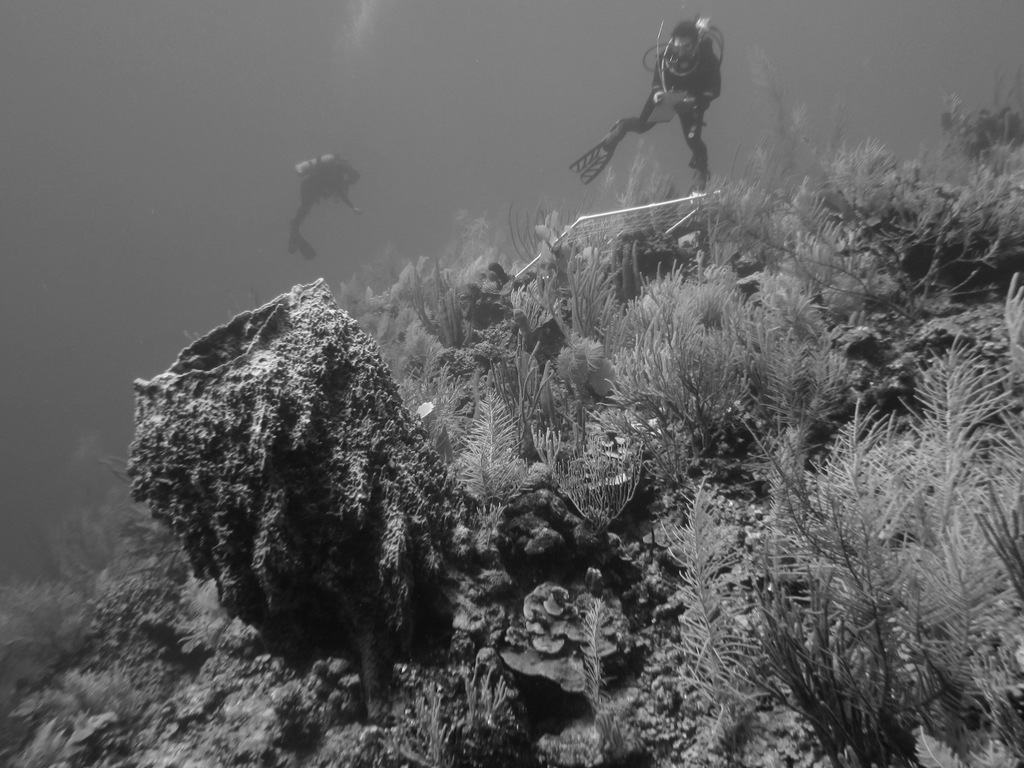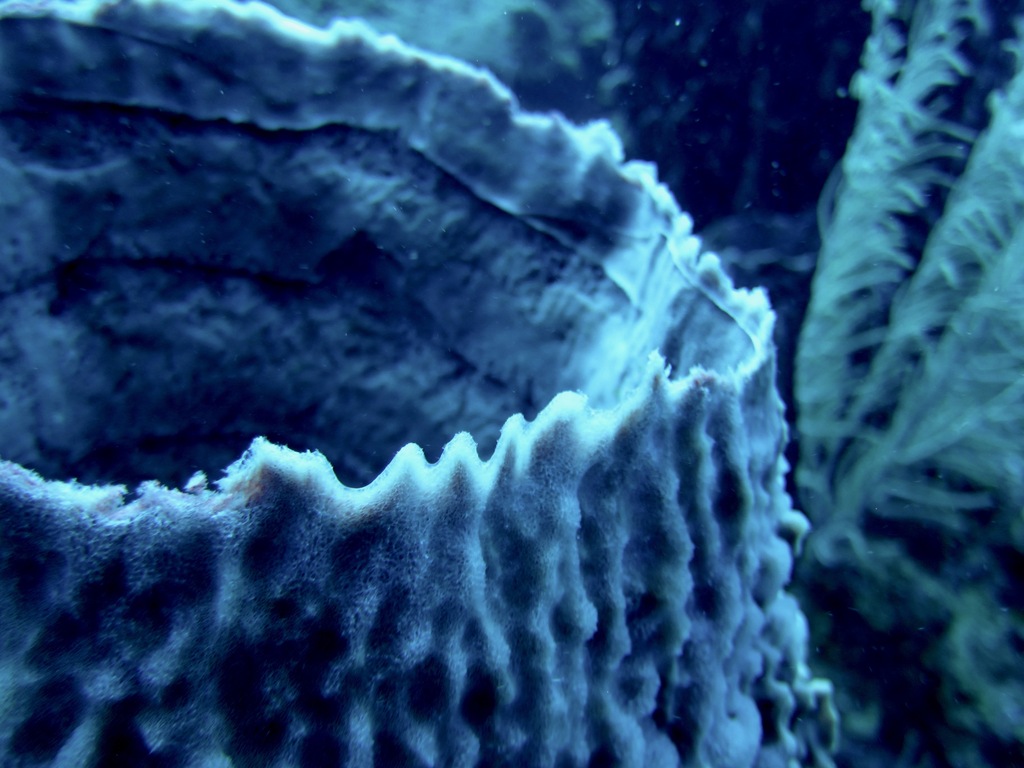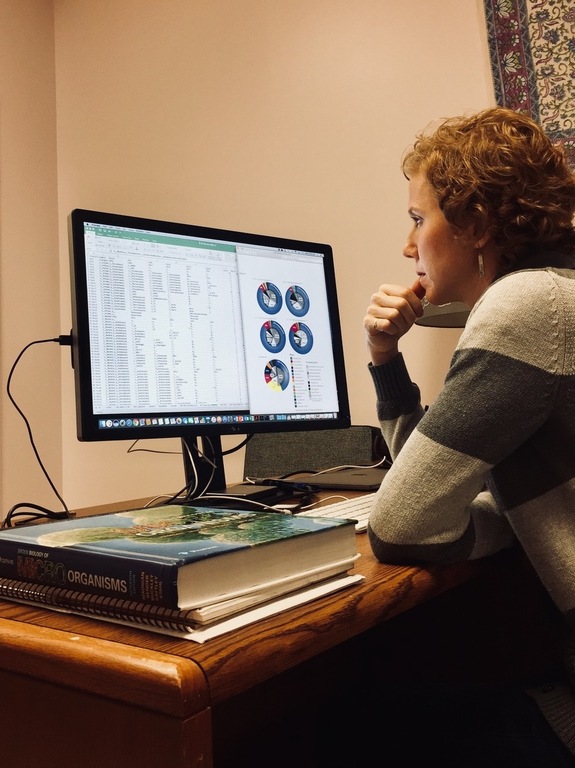Behind the science:
Environmental drivers of microbial community shifts in the giant ba...
2017, October 17
Posted by Veronica Radice
Fields
Community structure
Molecular ecology
Physiology
Focusgroups
Porifera (Sponges)
Bacteria and Archaea
Locations
Cayman Islands
Bahamas
Platforms
SCUBA (open-circuit or unspecified)
“Sponge microbiomes in mesophotic Caribbean reefs”
What was the most challenging aspect of your study (can be anything from field, lab to analysis)?
To date, the majority of my microbiome research has been with corals. Thus, it was challenging and interesting to come to appreciate the diversity and extreme specificity of a sponge microbiome in order to complete the analysis for this manuscript.
What was the most memorable moment in undertaking this study?
Unfortunately, I have not had the opportunity to collect deep sponges beyond 20 m, however once you start looking for giant barrel sponges (Xestospongia muta) in the Caribbean, they seem to appear everywhere we look and were sometimes large enough to swallow me whole! Other times they were small and cup-like, hiding along crevices and reef outcroppings. They are a tremendously adaptable species.
What was your favorite research site in this study and why?
This study was conducted from the Little Cayman Research Centre and the Caribbean Marine Research Center on Lee Stocking Island. Although in my experience, my favorite Caribbean reefs surround the Carrie Bow Cay Research Station, run by the Smithsonian on the Belize Meso-American Barrier Reef. This station is very small, housing only 6 scientists at once, the showers are outdoors and the island is infested with adorable hermit crabs. The reefs are diverse, providing high cover along topographically complex spur and grooves as well as deeper vertical relief along the shelf. Not to mention the extraordinary sponge diversity!
Other than your co-authors, with whom would you like to share credit for this work?
Elizabeth Kintzing (UNH) and Marc Slattery (UMiss) provided technical diving support along with my co-author Michael Lesser (UNH) to collect sponges from 20-90 m depth. Graduate students, Jessica Jarrett and Cara Fiore, helped with both field and laboratory support.
Any important lessons learned (through mistakes, experience or methodological advances)?
The field of environmental microbial ecology continues to advance at a rapid pace, thus we are able to examine and understand our organisms of interest in ever greater detail. In this paper, we highlight an advance in our understanding of sponge microbiomes and highlight both the stability and flexibility of the giant barrel sponge microbiome using 16S rRNA gene sequencing in comparison to previous work using clone libraries.
Can we expect any follow-up on this work?
There are no further manuscripts planned for this depth series, however we are currently collecting and processing samples of > 60 species of sponges collected across the Caribbean as part of a National Science Foundation Dimensions of Biodiversity Grant. In this study we will examine the evolutionary relationships between the sponge microbiome with host phylogeny and emergent functional properties (e.g. trophodynamics and chemical defences).
Featured article:
|
|
Environmental drivers of microbial community shifts in the giant barrel sponge, Xestospongia muta, over a shallow to mesophotic depth gradient | article Morrow KM, Fiore Cara, Lesser M (2016) Environ Microbiol 18:2025-2038 |
|




